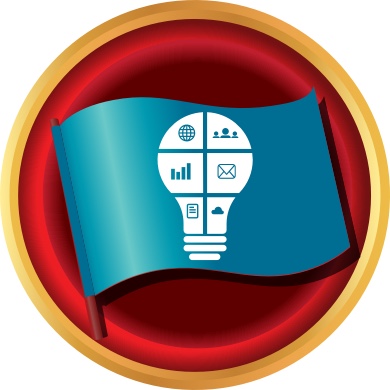Pathways
Pathways is a new toastmasters education programme launched somewhere in the year 2018 by Toastmasters International to replace its traditional education programme that comprises the Communication Track and Leadership Track.
Unlike the Communication Track in the Toastmasters traditional education programme where the projects are purely speech projects, some of the projects in Pathways require toastmasters who are undertaking the projects to carry out some exercises in addition to preparing a speech. Depending on the difficulty of the level involved, the exercise could be a simple one such as filling up worksheets to one that requires several months of voluntary work in an organisation.
These practical hands-on exercises encourage toastmasters to participate in and/or to organise various toastmasters activities and events. Pathways has also selectively reshuffled the objectives and skills taught in some of the Competent Communication Manual and Advanced Communication Series into elective projects in the 11 paths of Pathways.
The following pathways has been removed as of 2025:
- Strategic Relationship
- Team Collaboration
- Leadership Development
- Effective Coaching
- Innovative Planning

Dynamic Leadership Path
Table of Contents
The 11 Paths in Pathways
- Dynamic Leadership
- Leadership Development (removed as of 2025)
- Strategic Relationships (removed as of 2025)
- Effective Coaching (removed as of2025)
- Motivational Strategies
- Team Collaboration (removed as of 2025)
- Engaging Humour
- Persuasive Influence
- Visionary Communication
- Innovative Planning (removed as of 2025)
- Presentation Mastery
Each path is divided into 5 levels.
- Mastering Fundamentals
- Learning Your Style
- Increasing Knowledge
- Building Skills
- Demonstrating Expertise
Level 1 – Mastering Fundamentals
At Level 1, all the 11 paths have the same 4 projects.
- Ice Breaker
- Evaluation and Feedback
- Researching and Presenting (repurposed as a Level 3 elective project)
- Writing a Speech with Purpose
- Introduction to Vocal Variety and Body Language
Ice Breaker
Ice Breaker is the first project that every toastmaster undertakes, which is the same first project as in the traditional Competent Communication. It provides a new toastmaster an opportunity to speak publicly before a club without weighing too much expectation on a beginner.

Effective Coaching Path
For many people, they have never spoken publicly before a crowd before. For their first project, all they need is to overcome their fear of public speaking and speak on a topic that they are very familiar with – themselves.
Evaluation and Feedback
This project has been moved from the second project of level 1 to the fourth and last project of level 1.
Evaluation and Feedback is a 3-in-1 project where you have to give 2 prepared speech and 1 evaluation speech. The purpose of this project is to train a toastmaster to receive as well as to give feedback. Like every other prepared speech, a toastmaster will receive an evaluation and feedback from another toastmaster for his first prepared speech in this project.

Engaging Humour Path
The toastmaster who is undertaking this project is then to reflect on the evaluation and feedback given to him/her and incorporate this feedback into his/her second (next) prepared speech at another chapter meeting.
This second prepared speech can be the same prepared speech or a different speech but the purpose is to improve on his/her public speaking technique by reflecting and incorporating the feedback that has been given to him/her.
Although this process of reflecting and incorporating feedback into the preparation of a speech is practiced in this particular project, nevertheless it is a discipline that every toastmaster must put into practice for his/her own improvement and growth as a toastmaster.
After the toastmaster has given his/her second prepared speech, the next assignment is to take up the role of an evaluator at another chapter meeting. As an evaluator, the toastmaster will have the opportunity to learn to give evaluation and feedback to another toastmaster as a speech evaluator.
It is in evaluating another toastmaster’s speech that a toastmaster truly learn and reflect deeply into the skills of public speaking.
Researching and Presenting
This project has currently been repurposed as a Level 3 elective project. It has been replaced by two other projects, “Writing a Speech With a Purpose” and “Introduction to Vocal Variety and Body Language”.
Researching and Presenting requires the toastmaster who is undertaking the project to carry out a simple research on a relatively unfamiliar topic, organise the information gathered and present it into a speech. This is the same as Project 7, “Research Your Topic” from the Competent Communication manual in the Toastmasters traditional education programme, except that there is a research worksheet and a speech outline worksheet to be filled out. This project has been repurposed into a Level 3 elective project in late 2021.
Writing a Speech with Purpose
“Writing a Speech with Purpose” is the second project of level 1.
This project is somewhat a combination of the 2 projects “Project 2: Organise Your Speech” and “Project 3: Get to the Point” from the Competent Communication manual.
The project, “Organise Your Speech”, requires the speaker to prepare a captivating speech opening and an impactful conclusion. As for the speech body, it should have a clear message moving from one idea to another.
The project, “Get to the Point”, focuses on knowing the genera; purpose and the specific purpose of the speech and how to go about fulfilling these two purposes.
Introduction to Vocal Variety and Body Language
“Introduction to Vocal Variety and Body Language” is the third project of level 1.
This Level 1 project is a combination of 2 projects “Project 6: Vocal Variety” and “Project 5: Your Body Speaks” from the previous Competent Communication manual. Nevertheless, these two skills
- Vocal variety
- Body language
Are the two essential skills required for good public speaking. It is the distinctive difference between a good speaker and an average speaker. Vocal variety makes your speech sounds alive that is filled with emotions in contrast to one who sounds like a monotonous speaker reading straight from a script.
Body language uses your bodily movement and gestures, even your facial expressions, to communicate with your audience on top of the words that you are speaking.
Vocal variety addresses the audio faculty while body language impact the visual aspect of your audience. The more of the 5 senses of a person is affected, the better a person remembers a message.
Level 2 – Learning Your Style
At Level 2, there are 3 projects including the project, “Introduction to Toastmaster Mentoring” as a compulsory project for all 11 paths. The project “Introduction to Toastmaster Mentoring” requires a toastmasters to prepare a speech sharing his/her experience of how a mentor he/she once had that has impacted him/her when he/she was a protege.
The other 2 projects vary according to the paths the toastmasters are taking. They are a mixture of 2 of the following projects.
- Understanding Your Leadership Style
- Understanding Your Communication Style
- Managing Time
- Cross-Cultural Understanding
- Active Listening
- Know Your Sense of Humour
- Connect With Your Audience
- Effective Body Language
Among these 8 elective projects, “Active Listening”, “Connect With Your Audience” and “Effective Body Language” are brought forward from Level 3. They are elective projects in other paths but in some particular paths, they are foundational skills and techniques and thus, are brought forward as compulsory projects.

Innovative Planning Path
Level 3 – Increasing Knowledge
At Level 3, there are also 3 projects as there were in Level 2. In contrast, there is only 1 compulsory projects and 2 out of the 3 projects are chosen from the following 15 elective projects.
- Active Listening
- Connect with Storytelling
- Connect with Your Audience
- Creating Effective Visual Aids
- Deliver Social Speeches
- Effective Body Language
- Focus on the Positive
- Inspire Your Audience
- Know Your Sense of Humour
- Make Connections Through Networking
- Prepare for an Interview
- Researching and Presenting
- Understanding Vocal Variety
- Using Descriptive Language
- Using Presentation Software

Leadership Development Path
Similar to Level 2, the compulsory project vary according to the paths the toastmasters are taking. The following table shows the corresponding compulsory projects that are allocated to each respective path at Level 3.

Motivational Strategies Path
Level 4 – Building Skills
At Level 4, there are only 2 projects, 1 compulsory projects and 1 chosen from the following 8 elective projects.
- Building a Social Media Presence
- Create a Podcast
- Manage Online Meetings
- Manage Projects Successfully
- Managing a Difficult Audience
- Public Relations Strategies
- Question-and-Answer Session
- Write a Compelling Blog

Persuasive Influence Path
The following table shows the corresponding compulsory projects that are allocated to each respective path at Level 4.

Presentation Mastery Path
Level 5 – Demonstrating Expertise
At Level 5, each toastmaster has to carry out a reflection at the final level of the path he has taken in the project, “Reflect on Your Path”. In his/her speech, he/she has to share his/her experience in the jouney and the skills he/she has learned. There is still another compulsory project and one to be chosen from a list of 6 elective projects.
These are the 6 elective projects at Level 5.
- Ethical Leadership
- High Performance Leadership
- Leading in Your Volunteer Organisation
- Lessons Learned
- Moderate a Panel Discussion
- Prepare to Speak Professionally

Strategic Relationships Path
The following table shows the corresponding compulsory projects that are allocated to each respective path at Level 5.

Team Collaboration Path
